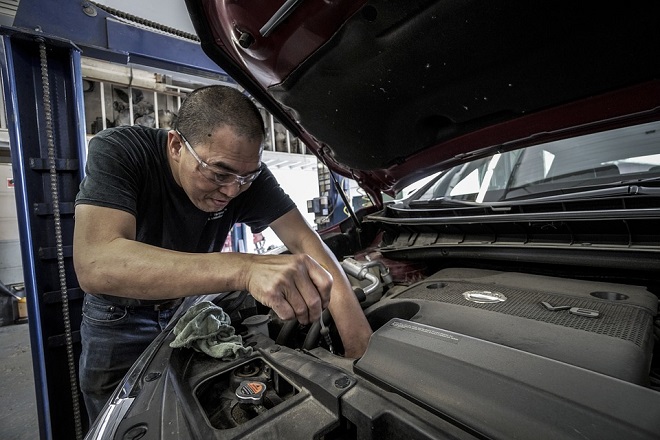A large portion of us have been driving vehicles since we were in our youngsters. For some, envisioning living without a car is exceedingly difficult. They sort of represent a portion of our lives. However, in the same way as other things, vehicles can bomb us from time to time.
6 Essential Vehicle Fixes You Should Know
When your car breaks down just when you need it most, you know how frustrating it is. Indeed, imagine a scenario in which I let you know that probably the most widely recognized explanations behind vehicle issues have simple fixes you could figure out how to do yourself. Here are some essential vehicle fixes are listed below.
Replacing oil
Your car’s engine will last longer and run more smoothly if the oil is changed and checked on a regular basis. Replacing your vehicle’s oil is one of the most central Do-It-Yourself abilities you ought to have for vehicle support or fix. Naturally, the situation is different if the oil drain plug and oil filter on your vehicle are extremely difficult to access.
The oil must be drained by removing the oil drain plug, emptying the oil filter by unscrewing it, replacing the oil filter and drain plug, removing the oil filler hole cap, and pouring new oil. These are the fundamental steps. Nothing you can’t gain from the lots of instructional exercises accessible on the web!
Repairing a damaged tire
There’s an explanation “wheels” is shoptalk for vehicle. This is due to the fact that the tires are one of your vehicle’s most crucial components. Additionally, they may occasionally abandon you completely. However, learning how to change a flat tire doesn’t have to be difficult and could actually save a life.
The basic steps include using a wrench to loosen the lug nuts, lifting the vehicle off the ground with a jack stand, removing the lug nuts (and the tire), mounting the spare tire, tightening the lug nuts, lowering the vehicle, and finally checking that they are tight.
Changing flash attachments
The majority of us are aware of spark plugs and their functions. They are the nitty-gritty components within the cylinder that generate sparks to ignite the gasoline and, in the end, power your automobile. However, they degrade approximately every 10,000 miles. The fix is entirely simple.
These are the steps: locating your spark plugs, removing the wire from them, removing the bad spark plug, replacing it with the new one, and reconnecting the wire. You’re finished! Before you attempt it on your own, make sure to watch a tutorial.
Eliminating scratches from paint
Scratches are the most horrendous. Your metal monster’s overall appearance can be jeopardized by even the tiniest scratch, which can be seen from a distance. Unfortunately, removing them at a body shop could set you back thousands of dollars. However, a straightforward DIY project can save money and time.
These are the steps: deciding the profundity of the scratch, daintily sanding the scratch, cleaning the region, applying scouring compound, cleaning the region with the scouring compound, washing the region, lastly waxing the region to seal the maintenance. That is all there is to it. You’ve quite recently saved yourself huge load of cash.
Changing the battery in a car
We frequently experience car battery failure at the most inconvenient times. Roadside assistance or calling a tow truck are your best options if you’re in the middle of nowhere. However, if your battery is showing indications that it may need to be replaced while you are at home, the self-repair procedure is simple.
The means include: removing any battery covers, disconnecting the negative cables, moving the clamp away from the battery post, moving the positive cable clamp away from the battery post, removing all screws, replacing the old battery with the new one, and finally reconnecting the cable clamps. Before removing the cables, be sure to label them.
Putting in a new taillight or headlight
Not only is it inconvenient to have a broken taillight or headlight, but it is also against the law. Thusly, you want to transform them when they start to blur. But when DIY replacement is so simple, why spend money on a mechanic?
The cycle includes: removing the screws that hold the headlight frame to the bracket, disconnecting the electrical connector, swapping out the broken bulb for a new one, plugging the connector back in, and finally installing the frame.
Even if only your frame is damaged, it can be just as dangerous. You can transform it following a similar technique.
Conclusion
Vehicle fixes can range from simple maintenance like oil changes, tire rotations and brake pad replacements to more complex car repairs such as engine or transmission work. It is important to stay on top of regular car maintenance in order to ensure that your vehicle runs properly and safely. Regularly scheduled checkups with a qualified mechanic can help identify potential issues before they become major problems, saving you money in the long run.
Additionally, when it comes time for bigger repairs make sure you are using a trusted mechanic who has experience working on your specific make and model of vehicle.




